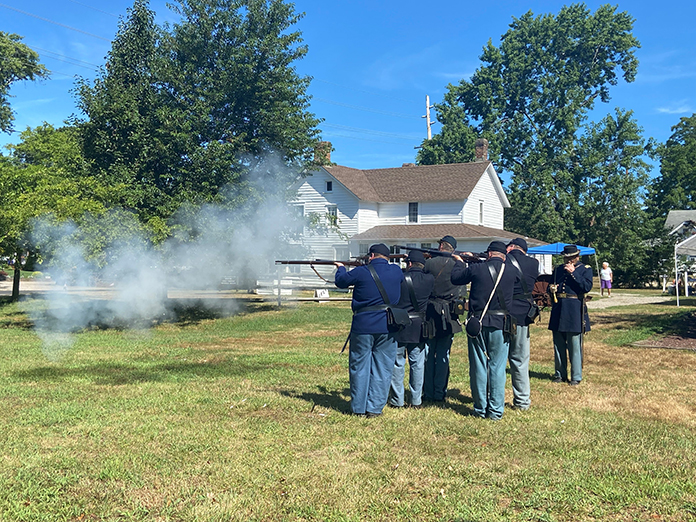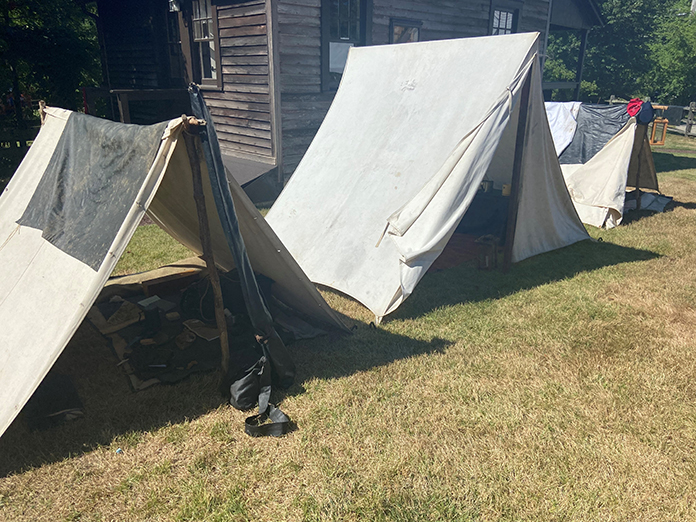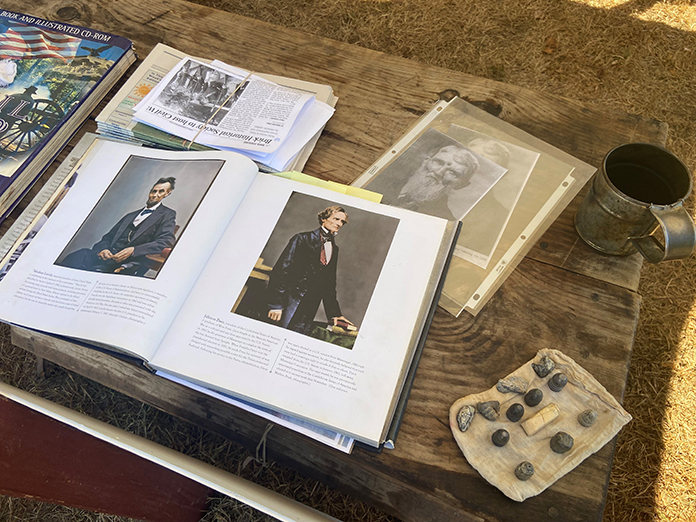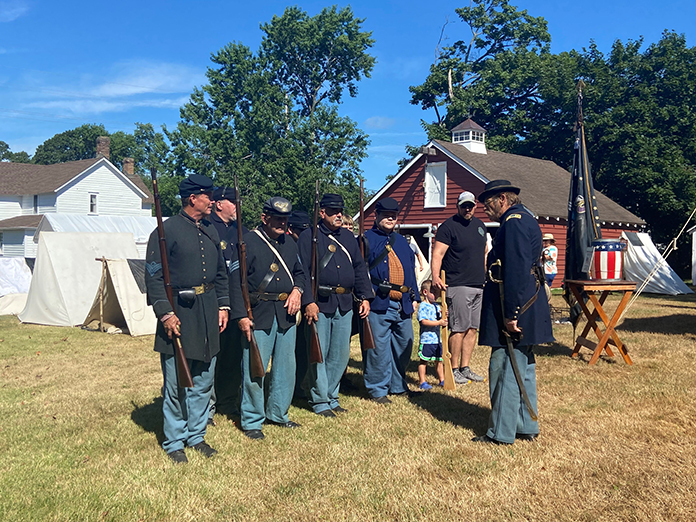
BRICK – Residents and visitors had the opportunity to step back in time and experience a glimpse of the everyday life of a soldier in the Civil War.
The Brick Township Historical Society hosted their annual Civil War Encampment on the grounds of the Havens Homestead Museum. The event featured “soldiers” from the 61st NY Infantry, Company C.
The soldiers marched, fired replica guns, interacted with the public and explained what life was like during an encampment. They also slept in tents and made their own food over a fire pit.
Brick resident “Sergeant” Jim Heine said the whole encampment is about showing what a Union camp might look and teaching visitors about its history.

“We’ve been here 25 plus years doing this… It brings history alive,” Heine said. “You can see how hot I am. It gives you a good feel for what the men went through back in 1863. They didn’t go home and take showers after two days. So, we try to teach people about the sacrifice that these men made and give them a good idea on what life was like.
“The connection the Civil War has with the Havens Homestead is that Henry Clay Havens was in the 14th New Jersey Volunteer Regiment. He was wounded and killed at the Battle of Monocacy,” Heine added.
Heine said at the beginning of the Civil War, the 61st NY Infantry numbered 850 men. Two years later, after the Battle of Gettysburg, only 136 members were left. He explained how a majority of soldiers died from disease, such as dysentery, typhoid fever and measles.
During the event at Havens Homestead Museum, the “soldiers” held drills and weapon demonstrations as well as showed examples of tents and weapons used during that time period. Heine said many of them have studied elements of Civil War life, having insights about different weapons, generals and even medical practices.

The tents on display showed where the men would eat and sleep. Inside, everyday items were arranged like a knapsack, wool clothes, rubber blankets, and more
One of the tents, called a dog tent, was used during the summer months and can fit two men inside. Heine explained how the soldiers sometimes didn’t even bother to put the tents up.
“If the men just marched 10 or 15 miles, I don’t think they really bothered with the tent. They had rubber blankets to keep the moisture off. After you’re marching that long you want food and sleep. You never knew when that bugle was going to sound and you were going to be called into battle,” Heine said. “In the case of Gettysburg, there were numerous units that literally marched 15 miles in the heat and went right into battle.”

At the event, the Brick Township Historical Society also provided tours of the museum and other buildings on the property. Visitors learned about its history while enjoying drinks and food from a homemade bake sale.







